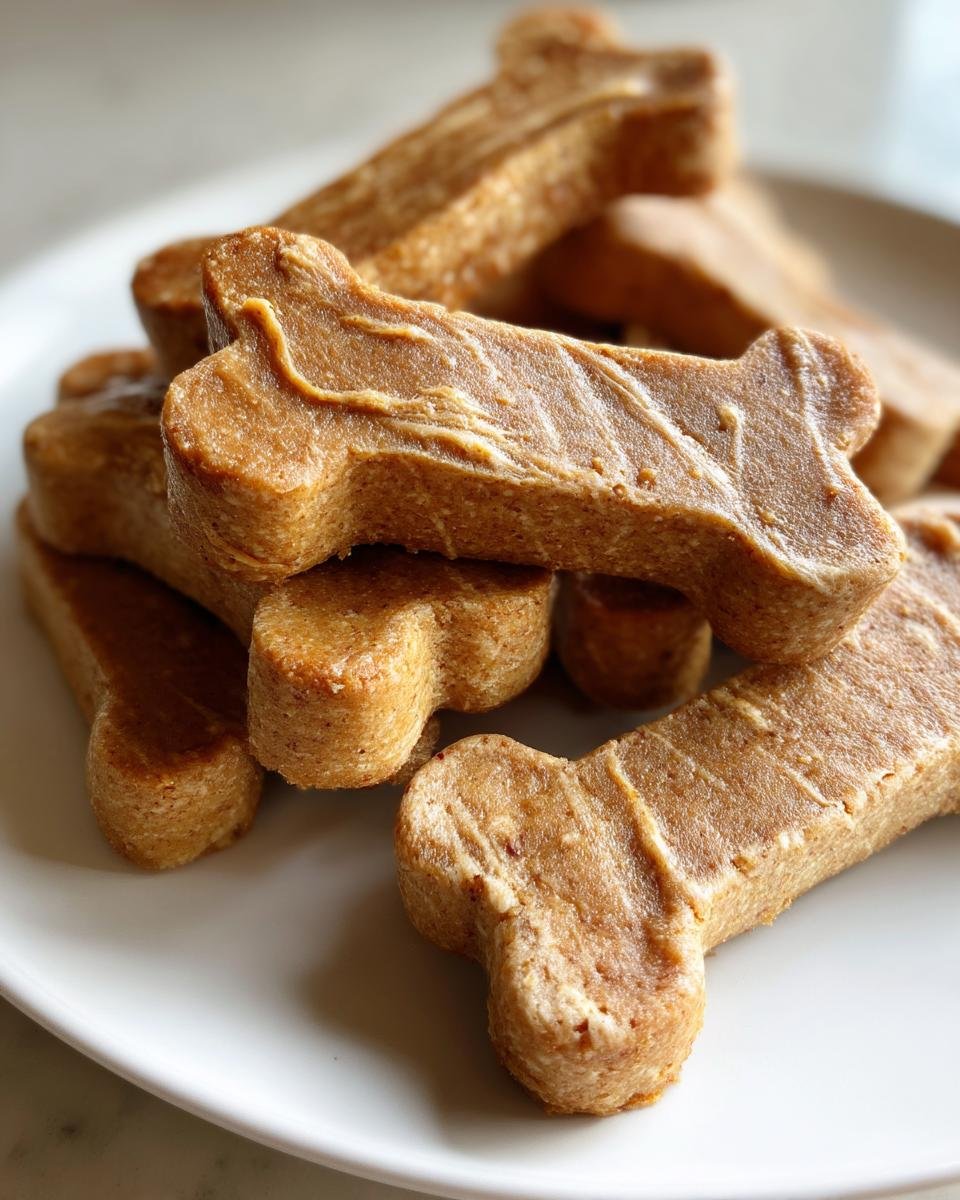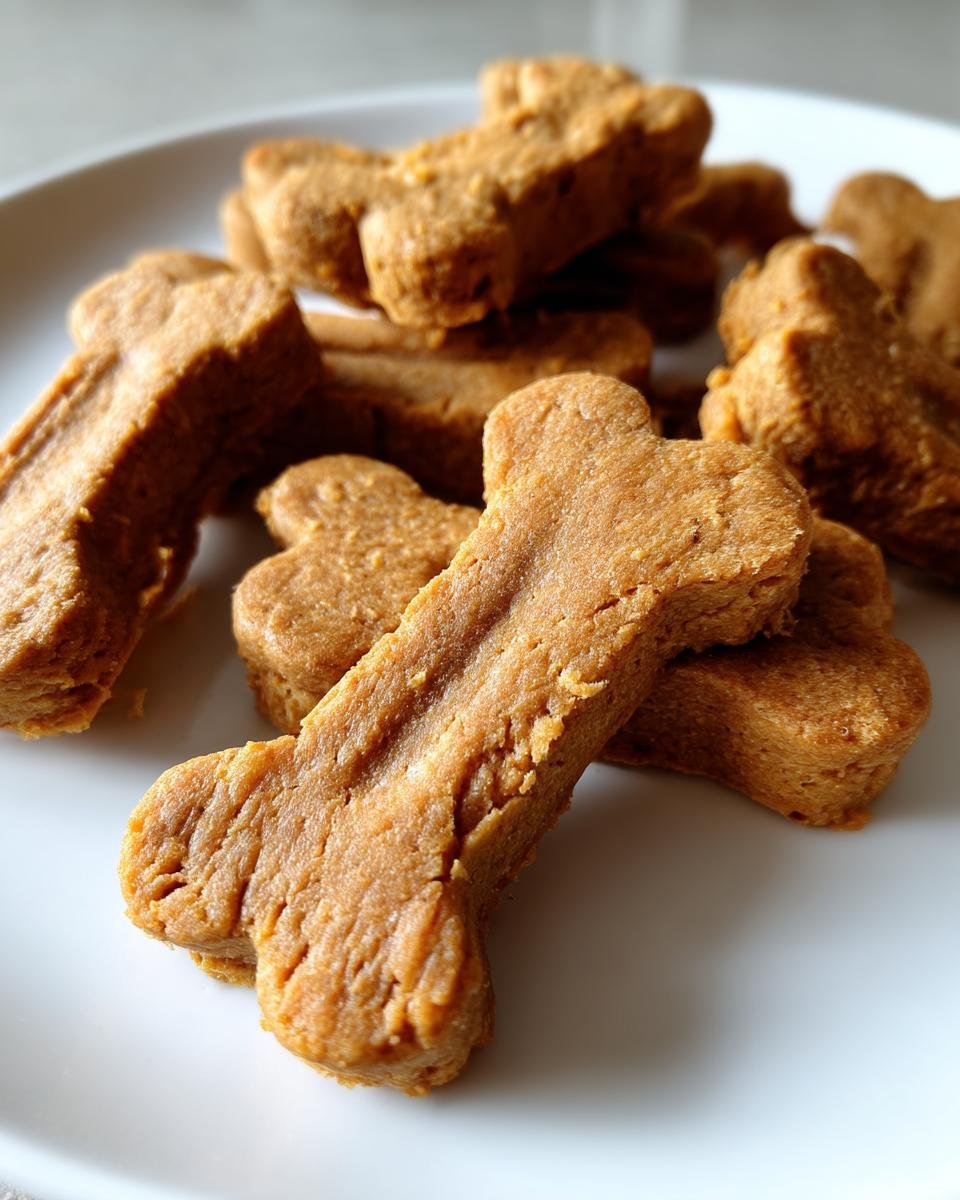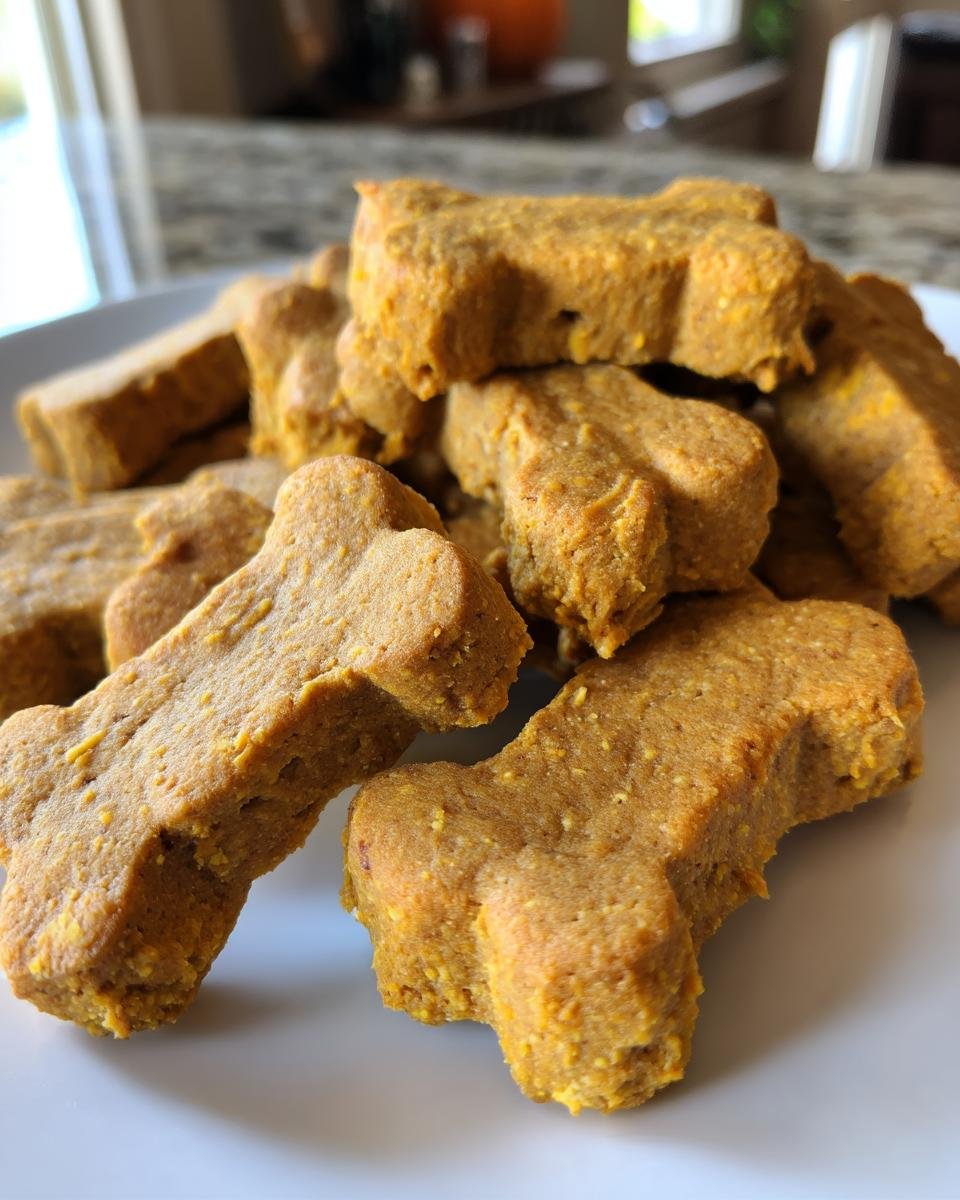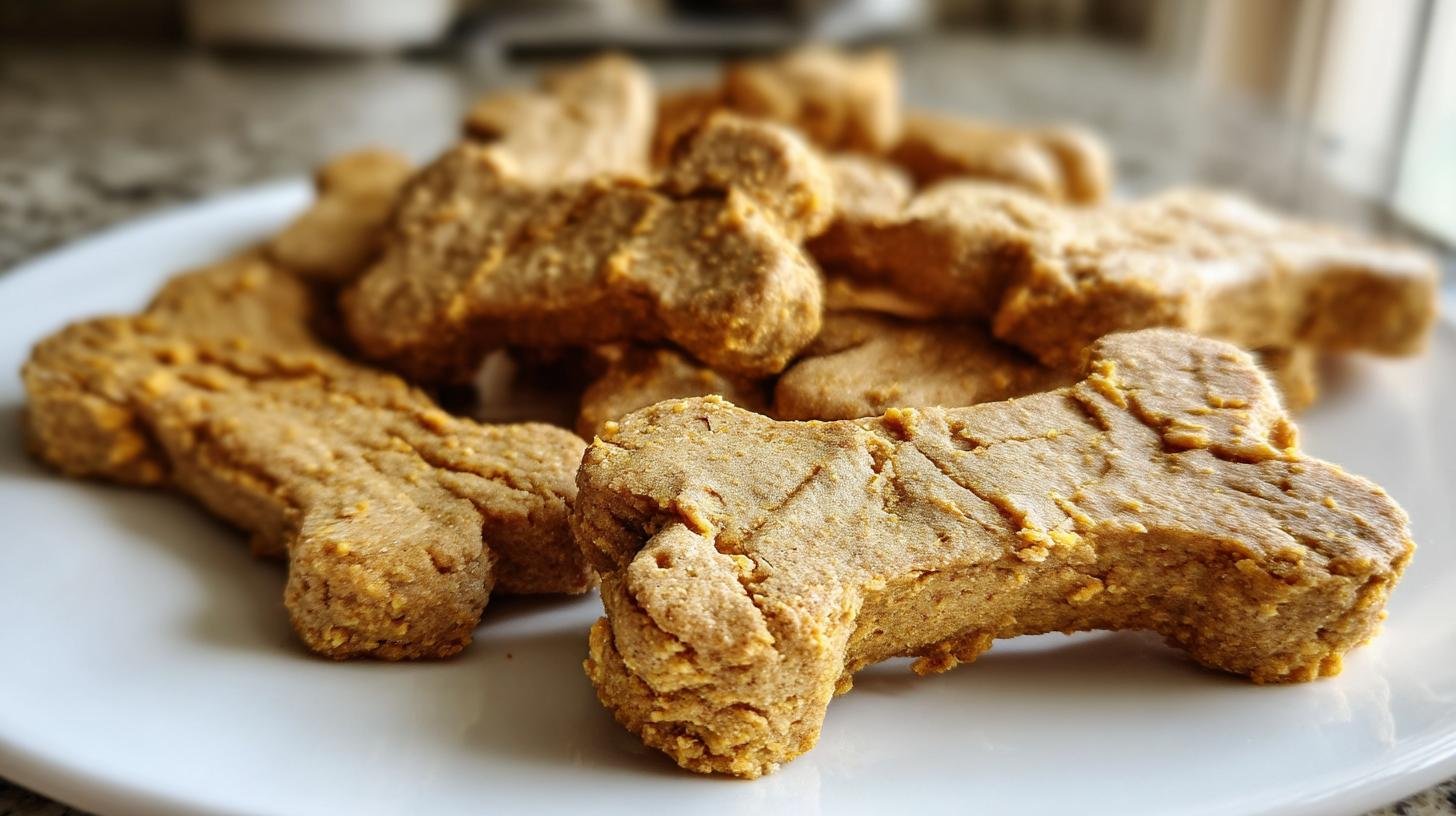Remember that time I accidentally baked dog biscuits instead of cookies? Let’s just say my golden retriever Bailey wasn’t complaining! After she turned up her nose at yet another pricey store-bought treat, I started experimenting with homemade dog treat recipes using simple, wholesome ingredients from my pantry. What began as a kitchen mishap became our favorite bonding ritual – her wagging tail proof that peanut butter and pumpkin puree beat mystery preservatives any day.
These recipes let you control what goes into your pup’s bowl (no sneaky xylitol here!) while saving money. I’ve seen firsthand how homemade snacks helped Bailey’s digestion and energy levels. After three years of testing batches and consulting our vet, I’m convinced every dog deserves treats made with the same care we give our own meals. Let’s get those tails wagging!

Ingredients for Homemade Dog Treat Recipes
Let’s talk ingredients – the good stuff that’ll have your pup doing happy spins! After three years of testing (and Bailey’s very thorough quality control), here’s what you’ll need:
- 2 cups whole wheat flour – gives that perfect crunch (swap with oat flour for sensitive tummies)
- 1/2 cup xylitol-free peanut butter – I use Teddy’s or Crazy Richard’s (check labels twice – some “natural” brands still sneak in that toxic xylitol!)
- 1 large egg – our secret binding agent
- 1/4 cup water – adjust as needed for dough consistency
- 1/2 cup packed unsweetened pumpkin puree – not pie filling! The fiber works wonders for digestion
Pro tip from my near-mistake: That peanut butter label check isn’t optional. I learned the hard way when a “healthy” brand almost sent us to the emergency vet. Now I keep a Sharpie in my pantry to circle expiration dates and ingredient lists!
How to Make Homemade Dog Treat Recipes
Let’s get those paws in the dough! Here’s my foolproof method – tested by Bailey’s enthusiastic taste-testing squad:
- Fire up the oven to 350°F (175°C) first thing. Trust me, you’ll want that heat ready when the dough comes together fast!
- Mix it like you mean it – dump all ingredients into your biggest bowl. I use a wooden spoon first, then get messy with my hands when the dough thickens. You’re aiming for a playdough-like ball that doesn’t stick to your fingers. Too dry? Add water 1 tsp at a time. Too sticky? Sprinkle in extra flour.
- Roll it out between two parchment sheets – no flour needed! Keep it to 1/4-inch thickness so treats bake evenly. Thinner = crunchier (great for plaque control!), thicker = chewier (perfect for senior pups).
- Cut those shapes! I’ve burned through six cookie cutter sets – bone-shaped ones get the most tail wags. Re-roll scraps until every last bit’s used. Pro tip: Freeze dough scraps for 10 minutes if they get too warm to handle.
- Bake 18-22 minutes until golden around the edges. Rotate pans halfway – my oven’s stubborn spots taught me this hard way. They’ll harden slightly as they cool!

Cutting and Baking Tips
Here’s where I messed up big time once: serving treats straight from the oven. Poor Bailey did the “hot potato” head toss! Now I cool them completely on a rack – about 45 minutes. For extra crunch? Leave the batch in the turned-off oven with the door cracked for an hour. Bone-shaped cutters aren’t just cute – their simple shapes prevent dough waste. No cutters? Use a pizza cutter to make squares! Just smooth the edges so there’s no sharp points for those eager mouths.
Why You’ll Love These Homemade Dog Treat Recipes
Let me count the ways these became our kitchen staple – and why your pup (and wallet) will thank you:
- Cost-effective crunch: That $12 bag of “all-natural” treats? I can make three batches for the same price! One batch costs me about $4 using pantry staples. Bailey gets twice as many treats, and I get to skip the guilt when she begs for “just one more.”
- Ingredient control: No more squinting at vague labels. When my neighbor’s Lab had chicken allergies, we swapped in salmon oil instead of egg. You know exactly what’s fueling those zoomies – especially crucial for seniors or pups with sensitive stomachs.
- Zero sketchy preservatives: Commercial treats last months because of chemicals I can’t pronounce. Our vet cheered when we switched – no more BHA or mystery “flavor enhancers.” These stay fresh naturally thanks to pumpkin’s acidity and proper storage.
- Size matters: Made mini hearts for my niece’s Chihuahua? Check. Giant bone-shaped treats for the Great Dane down the street? Done. No more choking hazards or unsatisfying nibbles – tailor them to your dog’s chew style.
Honestly? The real magic is watching your dog’s ears perk up when they hear the treat jar open. That “You made this JUST FOR ME?!” look? Priceless.
Ingredient Swaps for Your Homemade Dog Treat Recipes
Let’s face it – we’ve all had those “Oops, I’m out of pumpkin!” moments mid-baking. The beauty of homemade dog treat recipes? Flexibility! Here are my tested substitutions (and dangerous no-gos) from years of kitchen experiments:
- Flour fix: When Bailey started scratching from wheat allergies, we swapped in oat flour (grind rolled oats in your blender!). Coconut flour works too, but add extra liquid – it’s thirsty stuff!
- Pumpkin pinch: No canned pumpkin? Unsweetened applesauce adds similar moisture. I once used mashed banana during a snowstorm – cue the happiest beagle zoomies!
- Peanut butter problems: For nut-free pups, sunflower seed butter works magic. Just check labels twice – some brands sneak in sugar or salt.
Now the serious stuff – never substitute these:
- Chocolate (duh, but my cousin once almost used cocoa powder “for flavor”)
- Raisins/grapes – toxic even in tiny amounts
- Onions/garlic – sneaky killers in some spice blends
Pro tip from our vet scare: That “healthy” trail mix with raisins? Keep it far from your treat station! When in doubt, snap a photo of ingredients and text your vet. Your pup’s wagging tail is worth that extra caution.
Storing Your Homemade Dog Treats
Let me tell you about the Great Treat Meltdown of 2021 – I left a batch in a cute (but not airtight!) cookie jar, and two days later? Mushy crumbs crawling with mold. Lesson learned! Now I swear by locking containers – my go-to is the OXO Pop with the green button. Room temperature keeps them crunch-tastic for 2 weeks max. Need longer? Freeze ’em! Layer between parchment paper in a freezer bag for up to 3 months. Bailey does her “ice cube dance” when I toss her a frozen one on hot days.
Moisture is the enemy here – that’s why I toss a silica pack (the kind from vitamin bottles) in the container. No packs? A crumpled paper towel underneath absorbs sneaky humidity. And please – no sneaking these into the cookie jar! Human hands introduce oils that turn treats rancid faster.

Homemade Dog Treat Recipes FAQ
Can I use regular peanut butter?
Oh boy, this one’s crucial! Regular peanut butter can be a silent danger – many brands hide xylitol (that scary sugar substitute) in their “sugar-free” versions. I nearly made this mistake with a fancy organic brand that looked safe! Stick to trusted options like Teddy’s or Crazy Richard’s that list just peanuts and salt. When in doubt? Lick it yourself! Xylitol tastes sickly sweet to humans – if your PB gives your tongue a weird tingle, toss it.
How long do these treats stay fresh?
They’ll last 2 weeks in an airtight container – but let’s be real, your pup will probably inhale them faster! For longer storage, freeze extras up to 3 months. Pro tip from my moldy mishap: If your kitchen’s humid, tuck a silica packet (like from beef jerky) in the jar. You’ll know they’ve gone bad when they lose that nutty smell or get suspiciously soft.
Are these suitable for puppies?
Absolutely – just make ’em tiny! I used a teaspoon to scoop mini treats for my sister’s new golden retriever pup. Bake them 2-3 minutes less for softer chews that gentle puppy teeth can handle. But here’s my rule: Always check with your vet first, especially for breeds prone to food sensitivities. Our vet suggested omitting egg for puppies with allergies – applesauce worked like a charm!
Nutritional Breakdown
Let’s talk numbers – because even our pups deserve to know what’s fueling their squirrel-chasing marathons! Here’s the scoop per treat (based on my standard recipe, but your mileage may vary with different brands):
| Serving Size | Calories | Fat | Protein | Carbs |
|---|---|---|---|---|
| 1 treat (10g) | 50 | 2g | 2g | 7g |
Quick heads up: These numbers shift slightly depending on your peanut butter’s oil content or how thick you roll the dough. That organic pumpkin puree I splurge on? Adds an extra gram of fiber! Always calculate treats into your dog’s daily calories – our vet says 10% max from snacks. Bailey gets two of these after walks and still maintains her championship-level napping figure.
Share Your Experience
Nothing makes my day like seeing your pups crunch into these treats! When Bailey photobombed my last batch’s photoshoot, I realized homemade dog treat recipes aren’t just snacks – they’re stories. Snap a pic of your dog’s “Is that for ME?!” head tilt or cookie crumb beard. That joyful moment when their ears perk up? That’s the magic that connects us all. (P.S. My fridge is 80% dog treat art submissions – no shame!)
Print
Homemade Dog Treat Recipes: 125 Tail-Wagging Bites
- Total Time: 30 minutes
- Yield: 24 treats 1x
- Diet: Low Lactose
Description
Simple, healthy dog treat recipes you can make at home using natural ingredients.
Ingredients
- 2 cups whole wheat flour
- 1/2 cup xylitol-free peanut butter
- 1 large egg
- 1/4 cup water
- 1/2 cup unsweetened pumpkin puree
Instructions
- Preheat your oven to 350°F (175°C).
- Mix all ingredients in a bowl until a dough forms.
- Roll dough to 1/4-inch thickness and cut into shapes.
- Bake for 20 minutes or until golden brown.
- Cool completely before serving.
Notes
- Ensure peanut butter does not contain xylitol, which is toxic to dogs.
- Adjust treat size for small or large breeds.
- Store in an airtight container for up to 2 weeks.
- Prep Time: 10 minutes
- Cook Time: 20 minutes
- Category: Pet Treats
- Method: Baking
- Cuisine: Pet Food
Nutrition
- Serving Size: 1 treat (10g)
- Calories: 50
- Sugar: 1g
- Sodium: 10mg
- Fat: 2g
- Saturated Fat: 0.5g
- Unsaturated Fat: 1.5g
- Trans Fat: 0g
- Carbohydrates: 7g
- Fiber: 1g
- Protein: 2g
- Cholesterol: 5mg

